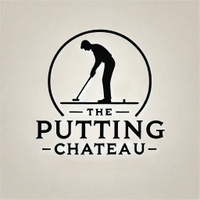
Short-Game Research & Methodology
The neuroscience, biomechanics, and precision skills that drive scoring inside 120 yards.
Why the Short Game Is Fundamentally Different
Through years of collaboration with Marius Filmalter and insights from Professor Ernst Pöppel’s neuroscience research, we’ve learned that the short game is controlled by a completely different motor system than the full swing.
Here’s the key:
**Full swings are ballistic.
Short-game shots are fine-motor controlled.**
And the difference comes from where in the brain each movement is processed.
How the Brain Controls Golf Movements
Ballistic vs. Fine Motor Skill Movements in Golf
Full swings function as ballistic motor programs, governed primarily by the basal ganglia, the brain’s system for initiating and executing fast, pre-planned actions. These movements are released as a single automatic sequence—powerful, high-velocity, and not adjustable once initiated. This is why full-swing mechanics remain stable under pressure and why the motion cannot be corrected mid-flight.
By contrast, wedge play, chipping, and putting rely on fine motor control, driven by the motor cortex and continuously refined by the cerebellum. These regions regulate force production, backswing length, tempo, face rotation, and real-time error correction. Because these motions are slower and require precise distance and directional control, the brain operates in a closed-loop mode, allowing ongoing adjustments throughout the movement. As a result, short-game and putting actions are more sensitive to small disruptions—but also improve more rapidly with feedback and repetition.

Choose Your Path to Better Scoring
Master Your Putting Performance
Short-Game & Wedge Play (60–125 Yards)
Short-Game & Wedge Play (60–125 Yards)
Build a reliable, tour-proven putting stroke using SAM PuttLab feedback, core-driven mechanics, and precision training inside 10 feet.
Short-Game & Wedge Play (60–125 Yards)
Short-Game & Wedge Play (60–125 Yards)
Short-Game & Wedge Play (60–125 Yards)
Develop distance control, launch, spin, and partial-swing consistency using Mevo+ data and video-guided technique refinement.
This website uses cookies.
We use cookies to analyze website traffic and optimize your website experience. By accepting our use of cookies, your data will be aggregated with all other user data.

